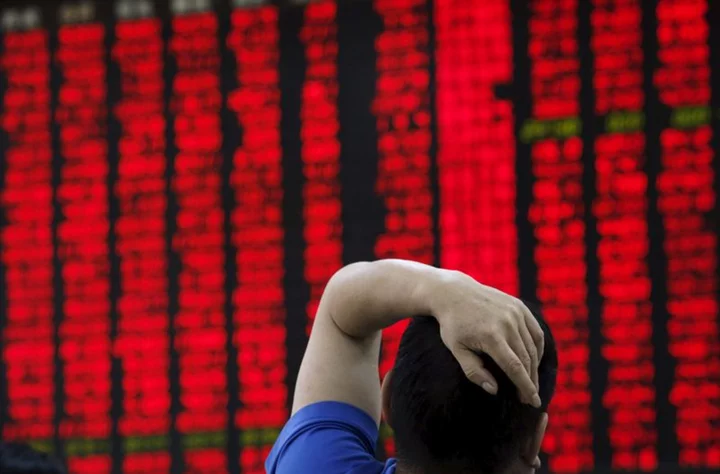By Rodrigo Campos
NEW YORK A measure of debt across the globe rose in the first quarter to almost $305 trillion, and the rising cost to service that debt is triggering concern about the financial system's leverage, a widely tracked study showed.
The Institute of International Finance, a financial services trade group, said on Wednesday global debt rose by $8.3 trillion in the first three months of this year compared to the end of 2022 to $304.9 trillion, the highest since the first quarter of last year and second-highest quarterly reading ever.
"Global debt is now $45 trillion higher than its pre-pandemic level and is expected to continue increasing rapidly," said the IIF in its quarterly Global Debt Monitor.
After peaking near 360% in 2021 the debt-to-output ratio has stabilized around 335%, above pre-pandemic levels.
Aging populations and rising healthcare costs continue to put spending pressure on governments, while "heightened geopolitical tensions are also expected to drive further increases in national defense spending over the medium term," wrote IIF researchers.
The report partly focused on the effects of last year's rapid rise in rates in some bank balance sheets.
"Although recent bank failures appear more idiosyncratic than systemic," the report said, "fear of contagion has prompted significant deposit withdrawals from U.S. regional banks."
The IIF voiced its concern that tighter lending practices among smaller banks would hurt some businesses and households harder.
"Given the central role of regional banks in credit intermediation in the U.S., worries about their liquidity positions could result in a sharp contraction in lending to some segments."
The IIF also noted the growth of shadow banking, or credit intermediation from non-bank financials.
"Shadow banks now account for more than 14% of financial markets, with the majority of growth stemming from a rapid expansion of U.S. investment funds and private debt markets."
Specifically, the report mentioned the "large portion" of corporate debt held by life insurance companies, "raising concerns over their increased exposure to less liquid assets."
EMERGING MARKETS HIT 100
The report showed 75% of the IIF's emerging market (EM) universe saw an increase in debt levels in dollar terms in the first quarter, with the overall figure crossing over $100 trillion for the first time. China, Mexico, Brazil, India and Turkey posted the biggest increases, the data showed.
Some of the larger EMs have benefited from the relative weakness of the dollar, which has attracted investors to their local currency debt. But for others access to markets has been harder or non-existent on either tighter spreads as rates rose in developed markets or fast-rising borrowing costs.
"With the interest rate differential between EMs and mature markets diminishing, EM local currency debt is less appealing for foreign investors," the IIF said.
(Reporting by Rodrigo Campos; Editing by Chizu Nomiyama)

